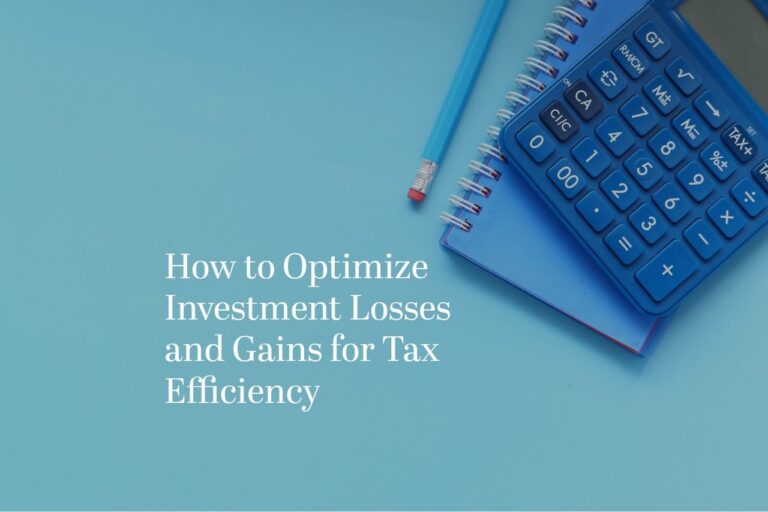These Physician Financial Planning Tips Can Help You Improve Your Financial Health
If you’re a doctor hoping to build a sound financial future for yourself, the best prescription is a suite of smart money moves to help you achieve your goals. It can be hard for doctors to find the time they need to care for their financial future—so much of their time is spent caring for others—but it is a savvy idea to get started with physician financial planning fundamentals as soon as possible.
Whether you’ve just graduated from medical school, or you’re in the middle of a thriving career and have found your finances aren’t where you’d like them to be, the strategies below can help you set a smart course of action for the years to come.
Embrace The Emergency Fund
Doctors often specialize in stepping in when there’s a health crisis—but what about planning for a potential emergency in their own lives? An emergency fund is a smart first step for physicians who are trying to find more financial peace of mind.
An emergency fund is a separate account that has enough cash reserves to cover unexpected expenses when life throws you a curveball. It could be an unforeseen high-priced home repair, unemployment, or a medical emergency of your own—all of these can derail your financial plan if you’re not adequately prepared. Without an emergency fund set aside, you could be forced to pull from investment accounts, which could eat into potential gains, incur penalties, and result in hefty taxation.
Work to set aside between three and six months of income. Physicians may benefit from saving even more, depending on their life circumstances. Here’s a quick guide:
- 3 Months of Gross Income: Single with strong and reliable income or married with a dual reliable income.
- 4-5 Months of Gross Income: Married with one income, or single with kids.
- 6+ Months of Gross Income: Married with kids or single with variable income (i.e. practice owner or performance-based compensation).
In addition to the practical benefits of this physician financial planning move, there are psychological benefits to knowing you’re properly prepared if a crisis comes your way.
Work Hard to Eliminate Debt
If there’s one common financial refrain from doctors, it’s that significant student loan debt is holding them back. Keep in mind that not all debt is created equal. Good debt can take many forms, but a general rule is that if the debt increases your net worth, it can be beneficial in the long run, such as with student loans.
Of course, you may have also incurred harmful, high-interest debt, and you’ll want to tackle that first. Here’s a quick guide:
- Good debt: Student loans, a mortgage that’s within your budget, or a small business loan
- Bad debt: Car loans, payday loans, or credit cards
Regardless of the kind of debt you have, make a plan to eliminate it. Here are two common methods to consider:
- Avalanche Method: Start by putting as much as you can toward the loan with the highest interest rate, while continuing to pay the minimum on other remaining debts. Once you pay off the high-interest-rate debt, tackle the next, and then the next, until you reach debt freedom.
- Snowball Method: Focus on paying off the loan with the lowest balance first so you can eliminate it entirely and develop positive momentum. Then, move on to the next lowest balance, and so on, until you finally tackle your highest balance.
Make the Most of Employer Benefits
If your hospital or office offers a retirement savings plan, often a 401k or 403b, make sure you’re taking advantage of this powerful benefit, especially if they offer an employer match. It’s free money and it can also help you save significantly at tax time. The retirement funds mentioned above grow tax-deferred, and whatever money you put into them is pre-tax, reducing your total taxable income.
Here’s a simplified example that can help you see the effects of this physician financial planning move: Joy Smith, MD is married and earned $250,000 this year. Joy contributed the 2022 maximum of $20,500 to her employer’s 401k plan. Using a 24% tax rate, Joy would have saved $4,920 in taxes this year.
Set and Stick to a Budget
The basis of any smart physician financial planning strategy is a realistic budget. Most people put budgeting off because it feels complicated and, let’s face it, life is busy. However, it’s a necessary step toward financial independence. It can help you keep your lifestyle spending in check, give you insight into where your money goes, and make sure you’re saving what you need to support the future you envision for yourself.
There are countless budgeting strategies, but if you’re just starting out, try the 50-30-20 budget rule. Here’s how it works:
- 50% of your income should be used for living expenses like bills, groceries, and your rent or mortgage.
- 30% should be set aside for funding your life, like going out to dinner, buying gifts, leisure activities, and other discretionary spending.
- 20% of your income should go toward debt payments and ideally, savings.
This isn’t a prescription you have to follow to the letter; find the balance that works best for your needs.
Focus on Retirement Savings
A physician financial planning strategy should also address saving for retirement. Saving between 15% and 20% of your income is ideal, and it’s an achievable goal when you create a plan and work it. Start by maximizing your employer match, then open and max out your Roth IRA. If you can still afford to save more, go back to your 401k or 403b and increase your contributions. This allows you to maximize the benefits of each type of account.
Physician Financial Planning: Key Takeaways
These five financial strategies can help you care for your finances as you care for your patients: considerately and confidently. Take these physician financial planning tips and apply them to your own unique situation, and you’ll be well on your way to a strong financial future.
Take the next step on your wealth-building journey—start maximizing your money today.
Illuminated Advisors is the original creator of the content shared herein. I have been granted a license in perpetuity to publish this article on my website’s blog and share its contents on social media platforms. I have no right to distribute the articles, or any other content provided to me, or my Firm, by Illuminated Advisors in a printed or otherwise non-digital format. I am not permitted to use the content provided to me or my firm by Illuminated Advisors in videos, audio publications, or in books of any kind.








